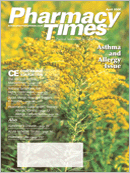Publication
Article
Pharmacy Times
A Message from Kathleen Jaeger: It Pays to Invest in Generics
The next time a customer walks up toyour pharmacy counter and asks for abest-selling brand prescription medicine,there is a good chance you will soon beable to tell him or her that a more affordablegeneric version is now available.
With more than $100 billion in blockbusterbrand products coming offpatent within the next 4 years, includingwidely used medicines such asAmbien, Zoloft, and Zocor, patientscould soon realize millions of dollars insavings each year through generic versionsof these products. That isbecause generics cost 30% to 80% lessthan brands, yet provide the samemedicine and the same results. Toensure that patients can benefit fromthose savings, the generic industry isworking hard to get these medicinesapproved in a timely manner by theFDA and onto your pharmacy shelves.
Yet, despite the generic industry'sefforts, bringing those medicines tomarket can be fraught with regulatoryand legal delays. One of the loomingindustry concerns and potential causesfor delay is the lack of adequate fundingfor the FDA's Office of GenericDrugs (OGD), the agency responsiblefor approving generic medicines. Forseveral years, OGD has faced budgetconstraints and has been limited in itsability to hire more scientists to reviewgeneric applications. As a result, OGDnow faces a growing backlog of genericapplications, resulting in longerapproval times for those applications.
Patients and pharmacies should beconcerned. As more blockbuster productsare expected to come off patent,more generic applications are being submittedto OGD. In fiscal year 2005 alone,generic companies filed more than 800applications for generic medicines,increasing OGD's workload by 36%. Andthese numbers are only expected toincrease as more blockbuster patentsexpire in the next few years.
Although OGD's 200 scientists areworking overtime and doing all thatthey can to review generic applications,the review time is taking longer.Today, despite a statutory deadline of 6months, it takes a median time of 16.3months to review a generic application;OGD estimates that the time willlengthen to 17.5 months in 2006because of the backlog. Those figuresare in stark contrast to the offices thatreview new drugs, which had >2500employees to review about 150 applicationsin 2004.
To its credit, OGD has been workingwith the generic industry to improveefficiencies and communications in thereview process. But those steps canonly go so far without hiring more personnel;thus, it is clear that OGD needsand deserves more funding for thosepurposes, and that Congress shouldallocate increased funds for OGD in thefederal budget.
By providing a modest funding increasefor OGD—even $15 million—thefederal government, patients, and publicand private health care purchaserscould realize an enormous return onthe investment. That is because themore generics that are available topatients, the more savings are generated.Those savings would enable thefederal government to reach moreAmericans through its priority healthcare initiatives, such as Medicare,Medicaid, and programs to improvechildren's health care, assist the chronicallyill, and fight AIDS. Medicare alone,for example, anticipates that its prescriptiondrug benefit will cost $8 billionless than anticipated in 2006, duein part to the use of affordable genericmedicines. And just a 1% increase inthe use of generics nationwide wouldsave $4 billion annually.
Congress should do what it can tohelp keep health care costs under controlfor patients, and providing fundingfor OGD would be a positive step. Withmore funding, OGD will be able tospeed more generics to market, andyou will be able to tell your customersthat they can save some real money ontheir prescriptions.







